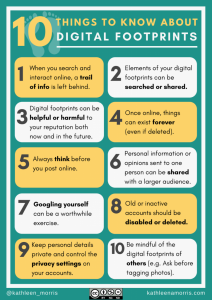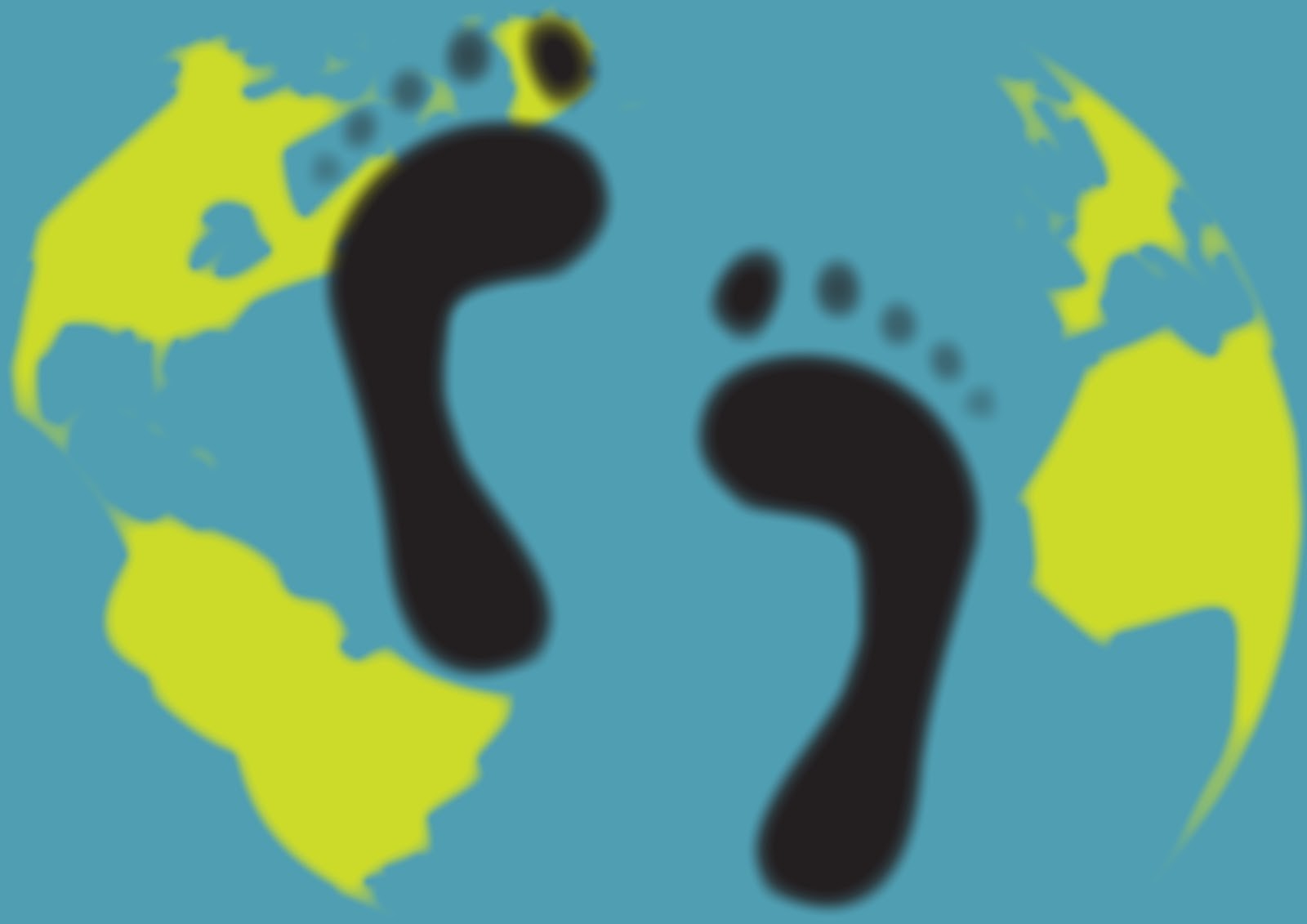The article ‘How to Keep Your Digital Footprint Clean in 2017’ by Kim Maslin is a great reminder to manage our digital identities. In the excitement of trying out new tools or receiving newsletters for articles and resources, we almost end up filling up our mailboxes with unnecessary junk. Honestly, it is hard to remember the number of apps or accounts we are connected with.
This article also makes me realize the ways in which our roles as educators have changed. We need to empower the students to figure out ways to deliberately build a positive digital footprint. As young students are using digital platforms daily for researching, creating and sharing, they need to develop the understanding that they leave a trail behind themselves each time they go online.
Information once posted can be difficult to retrieve due to the interconnected nature of the internet. Lessons on creating strong passwords and understanding the difference between information they can post and information they need to keep private can be a good starting point for students of lower elementary.
 CommonSense media has some age-appropriate resources and interesting lessons such as Follow the Digital Trail (K-2), Powerful Passwords (K-2) and Keep it Private(K-2) to help educators move in this direction. I particularly liked this poster from Kathleen Morris’ blog which illustrates a visual view of things to keep in mind when thinking of digital footprints.
CommonSense media has some age-appropriate resources and interesting lessons such as Follow the Digital Trail (K-2), Powerful Passwords (K-2) and Keep it Private(K-2) to help educators move in this direction. I particularly liked this poster from Kathleen Morris’ blog which illustrates a visual view of things to keep in mind when thinking of digital footprints.
As students transition from being consumers to producers of information the teachers can encourage the idea of creating a positive digital footprint by modeling positive online behavior, class discussions, class blogs, commenting on peers blogs, and embedding and integrating strong positive vocabulary in daily routines. Creating anchor charts and checklists in collaboration with students can also empower the students to exhibit positive digital footprint. One idea is to explain to students the comparison between their learning portfolio and posting online. Both are similar in that one must carefully select artifacts for both their learning portfolio and posting online, however, the difference being that online posts attract the global audience. The students can think about some questions they might want to ask before posting, such as:
Is the vocabulary appropriate?
How is everyone going to feel when they see or read it?
What learner profile attribute will people connect me with? Am I being Caring, Knowledgeable or Open-Minded?
Here are a few resources which I find useful
Books by Julia Cook such as The Technology Trail, ‘Cell Phoney’ and ‘But It’s Just a Game’ have some good ideas about responsible device usage and healthy gaming balance. ‘The Techno Smart activity and idea book’ (teacher resource) has some fun and interesting activities for developing positive digital citizenship. I especially like the toothpaste activity ‘Can I take those words back’ as it helps the students become aware of choosing their words and texts carefully.
Reflections by Ms. Silky Vyas
Works Cited
“How to Keep Your Digital Footprint Clean in 2017.” Kim Maslin, kimmaslin.com/project/how-to-keep-digital-footprint-clean/.
Morris, Kathleen. “10 Things To Know About Digital Footprints.” Kathleen Morris Primary Teach, 12 June 2018, www.kathleenamorris.com/2018/06/12/digital-footprints/.


